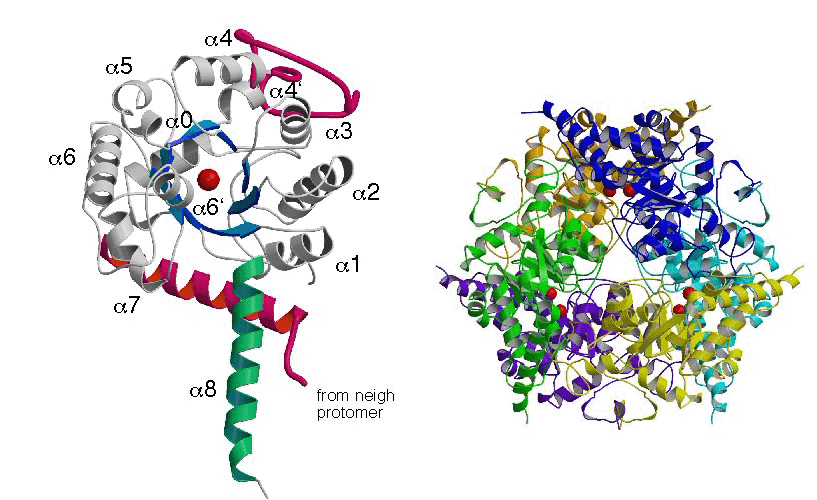

Summary
The Diels-Alder reaction, which forms a six-membered ring from an alkene (dienophile) and a 1,3-diene, is synthetically very useful for construction of cyclic products with high regioand stereoselectivity under mild conditions. It has been applied to the synthesis of complex pharmaceutical and biologically active compounds. Although evidence on natural Diels-Alderases has been accumulated in the biosynthesis of secondary metabolites, there has been no report on the structural details of the natural Diels-Alderases. The function and catalytic mechanism of the natural Diels?Alderase are of great interest owing to the diversity of molecular skeletons in natural Diels?Alder adducts8. Here we present the 1.70 Å resolution crystal structure of the natural Diels-Alderase, fungal macrophomate synthase (MPS)3, in complex with pyruvate. The active site of the enzyme is large and hydrophobic, contributing amino acid residues that can hydrogen-bond to the substrate 2-pyrone. These data provide information on the catalytic mechanism of MPS, and suggest that the reaction proceeds via a large-scale structural reorganization of the product.
References